To understand why the 10 schools with the lowest ISTEP scores among township and small city districts in Marion County rank at the bottom, look to the same the barriers to learning that many inner-city students face.
For example, every school on this list has high poverty. No fewer than seven of 10 students in all of them come from families that are poor enough to qualify for free or reduced-priced lunch, and for a few the rate is much higher than that. The poorest schools on the list see more than eight of every 10 children come from high-poverty homes.
On average in Indiana, 49 percent of students come from families that are poor enough to qualify for free or reduced-price lunch, the most common poverty measure for schools. To qualify, a family of four cannot earn more than $44,863 annually.
This is the final story of six Chalkbeat published including short profiles of the top-scoring, and lowest-scoring, Marion County public schools on the 2013-14 ISTEP for three types of schools — Indianapolis Public Schools, charter schools and township and small city schools. Check out our past stories on the top-rated IPS schools, lowest-scoring IPS schools, the top-rated charter schools, lowest-scoring charter schools and top-rated township or small city schools.
(ISTEP scores and grades for the 2014-15 school year are not expected to be released until late this year or early next year.)
The merged city of Indianapolis and Marion County includes 11 separate school districts — Indianapolis Public Schools, nine township school districts and the small cities of Speedway and Beech Grove. Additionally, 18 charter schools operating in the city this year reported ISTEP scores in 2013-14.
Besides the heavy influence of poverty and other learning barriers, the lowest-scoring schools on ISTEP show two other trends that are consistent in IPS and charter schools — middle schools are over-represented among the lowest scoring schools, and good scores can be very fragile. Some of the lowest-scorers had much better performance in recent years but struggled to maintain the higher passing rates.
Here’s a look at the county’s 10 lowest-scoring township and small city schools for passing ISTEP in 2013-14:
Raymond Park Middle School
ISTEP has been a roller coaster ride for Raymond Park Middle School in Warren Township. Between 2009 and 2011, scores were on the rise, reaching 63.3 percent passing in 2011.
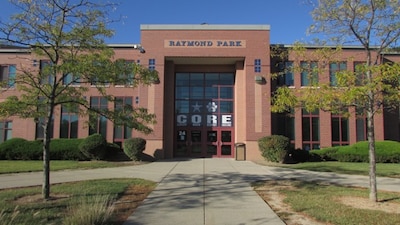
But since then, scores fell to 57.8 percent passing in 2014.
The school’s grade, which had held stead at a C for four years, fell to D in 2014.
Raymond Park serves about 625 students in grades 7 and 8. About 70 percent are from families that are poor enough to qualify for free or reduced-price lunch. The school is 42 percent white, 35 percent black and 14 percent Hispanic.
About 16 percent of the school’s students are in special education, and about 7 percent are English-language learners.
Stonybrook Intermediate Academy
Warren township’s Stonybrook Intermediate Academy is a large school serving 560 students in grades 5 and 6. On ISTEP, about 57.1 percent passed in 2014. It emphasizes hands-on learning and using technology in lessons.
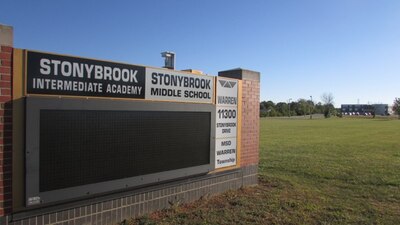
The school has struggled on ISTEP for four years, posting passing rates between 55 and 58 percent in that time. The school’s highest grade in that span was a C in 2013. Its lowest grade was an F in 2011. In 2014, it earned a D.
About 79 percent of the school’s students come from families that are poor enough to qualify for free or reduced-price lunch. It has a large share of children who are in special education at 19 percent. About 8 percent are English-language learners.
The school is about 62 percent black, 18 percent white and 13 percent Hispanic.
Crestview Elementary School
Crestview Elementary School, located in Lawrence Township, was rated an F in 2012 when just 47.5 percent passed ISTEP, but it has earned two B-grades since then for strong gains on ISTEP.

It’s passing rate jumped to 60 percent in 2013 before sliding back to 56.8 percent in 2014.
The school, which serves about 375 students in grades 1-6, has a high percentage of poor children with about 75 percent coming from families that qualify for free or reduced-price lunch.
About 25 percent of students are Hispanic, and 20 percent are learning English as a new language. The school is about 51 percent black and 16 percent white. About 15 percent are in special education.
Chapel Hill 7th & 8th Grade Center
Located in Wayne Township, Chapel Hill 7th and 8th Grade Center is a large junior high school with about 1,100 students. The school has consistently struggled on ISTEP. In 2014, about 55.4 percent of students passed.
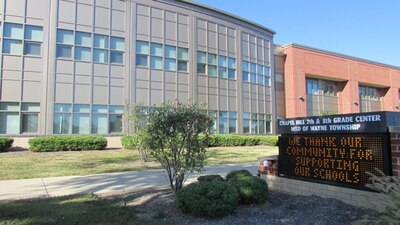
Over nine years, the school’s passing rate has never exceeded 60 percent or fallen below 54 percent. Chapel Hill has been rated a D by the state for three straight years.
The school serves a large share of poor children, with about 75 percent coming from families that qualify for free or reduced-price lunch.
Chapel Hill’s student body is about 42 percent black, 28 percent white and 22 percent Hispanic.
About 13 percent of the school’s students are English-language learners, and 14 percent are in special education.
Guion Creek Middle School
Guion Creek Middle School in Pike Township serves about 923 students in grades 6-8. In 2014, about 55.1 percent passed ISTEP.

Despite three years of improved ISTEP scores, Guion Creek was rated a D in 2014 and 2013. Overall, its passing rate is up 11 points from 44 percent passing in 2011.
Guion Creek is another school serving many poor children. About 83 percent of its students come from families that are poor enough to qualify for free or reduced-price lunch.
The school is 58 percent black, 32 percent Hispanic and 5 percent white. A very large 25 percent of students are English-language learners, and 14 percent are in special education.
Harrison Hill Elementary School
Lawrence Township’s Harrison Hill Elementary School only saw 55 percent pass ISTEP in 2014, but individual student growth on the exam was good enough to raise the school’s grade to a B, up from a C in 2013 and a D in 2012.
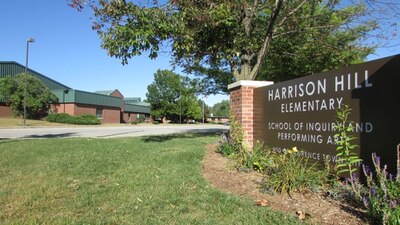
A fairly large school that serves about 700 students in grades 1-6, Harrison Hill has a high percentage of students who come from families that are poor enough to qualify for free or reduced-price lunch at 83 percent.
About 29 percent of Harrison Hill’s students are Hispanic, and a large percentage are learning English as a new language at 25 percent of the school.
The school’s enrollment is about 41 percent black and 20 percent white. About 12 percent of students receive services in special education.
Stonybrook Middle School
Like it’s Warren Township sister school Stonybrook Intermediate School, which shares its campus, Stonybrook Middle School has struggled with ISTEP.
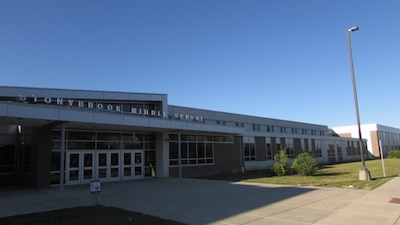
But its 2014 passing rate of 54.8 percent was an improvement from 50.3 the prior year and helped the school earn a C-grade after consecutive D’s. Still, the school’s passing rate has not exceeded 63 percent in the past nine years, and it’s been seven years since that high-water mark.
The school serves about 627 students in grades 7 and 8. About 77 percent come from families that are poor enough to qualify for free or reduced-price lunch. The school is very divers at 64 percent black, 14 percent white and 14 percent Hispanic.
About 7 percent are English-language learners, and about 16 percent are in special education.
College Park Elementary School
Pike Township’s College Park Elementary School has seen small but steady gains on ISTEP over three years, reaching 54.7 percent passing in 2014.
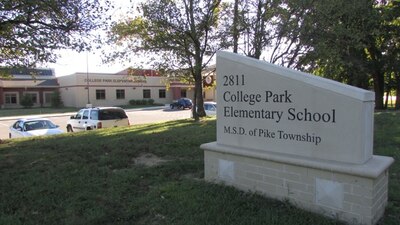
That’s up from 50 percent two years before. The gains helped raise the school’s grade to a C in 2014 from a D the prior year. College Park serves about 445 students in grades K-5.
The school has a large share of Hispanic students at 34 percent and one of the highest percentages of English-language learners among Indiana elementary schools at 32 percent.
About 77 percent of the school’s students come from families that are poor enough to qualify for free or reduced-price lunch. About 51 percent of students are black, and 6 percent are white. About 6 percent are in special education.
Sunny Heights Elementary School
Four years ago, Warren Township’s Sunny Heights Elementary School was ranked by the Indianapolis Star as one of “five schools that beat the odds.” It was rated an A by the state despite having among the highest percentages of students in the state with some of the toughest barriers to learning.

The school has high poverty, with about 80 percent of students coming from families that are poor enough to qualify for free and reduced-price lunch. About 15 percent are English-language learners, triple the state average. About 8 percent are in special education.
The school of about 475 students in grades K-4 is also very diverse. About 63 percent of students are black, 16 percent are Hispanic and 11 percent are white.
Despite its challenges, about 67 percent passed ISTEP in 2011, close to the state average. But things have changed for the worse. In 2014, 53.8 percent of Sunny Heights students passed ISTEP, and the school’s grade fell to a D.
The district this year installed a top principal to lead Sunny Heights and try to turn its performance around.
Brook Park Elementary School
Brook Park Elementary School in Lawrence Township might have the lowest passing rate outside of IPS of any traditional elementary school in Marion County, but there’s good news, too. Its scores are on the way up.
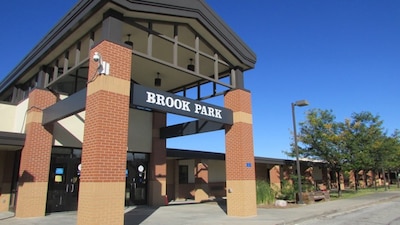
Just 52 percent of the school’s 650 students in grades 1-6 who took ISTEP passed in 2014. But that was the third straight year its passing rate improved over the prior year, up from a 47 percent passing rate in 2011. Improving test scores also helped raise the school’s grade to a C, up from an F the prior year.
With 82 percent of students coming from families that are poor enough to qualify for free an reduced-price lunch, Brook Park is a high-poverty school. About 58 percent of the students are black, 19 percent are Hispanic and 17 percent are white.
About 14 percent of students are English-language learners, and 13 percent are in special education.


